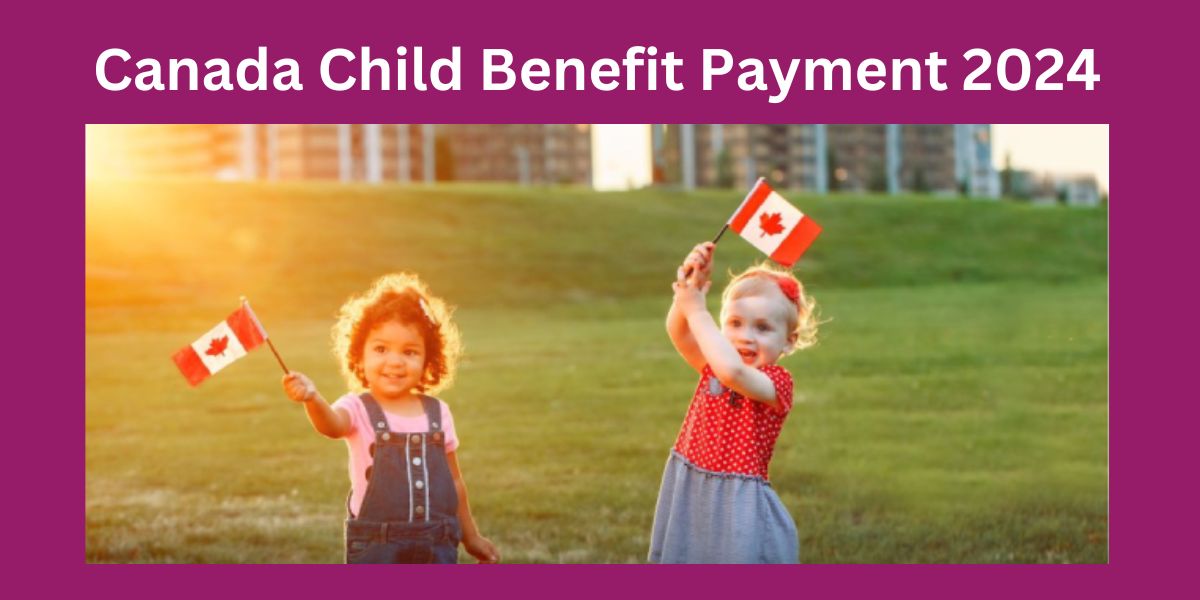Are you a parent or guardian in Canada wondering about the Canada Child Benefit (CCB) for 2024? Whether you’re new to this benefit or looking to stay updated on the latest changes, you’ve come to the right place. This article will break down everything you need to know about the Canada Child Benefit Payment for 2024—eligibility, payment dates, how to apply, and more. Let’s dive in!
What is the Canada Child Benefit (CCB)?
The Canada Child Benefit (CCB) is a tax-free monthly payment made to eligible families to help them with the cost of raising children under the age of 18. Introduced by the Canadian government, the CCB is designed to provide financial support to families, ensuring every child has a fair shot at a good start in life. The amount you receive is based on several factors, including your income, the number of children, and their ages.
Why is the Canada Child Benefit Important?
Raising children isn’t cheap, right? The CCB is crucial because it provides much-needed financial assistance to families. It helps cover expenses such as child care, education, and even daily necessities like food and clothing. Think of it as a safety net, ensuring that your child’s basic needs are met, regardless of your financial situation.
Who is Eligible for the Canada Child Benefit in 2024?
So, how do you know if you’re eligible? Eligibility for the CCB depends on a few key criteria:
- Residency Status: You must be a resident of Canada.
- Primary Caregiver: You must be primarily responsible for the care and upbringing of the child. This typically means the parent or guardian who is providing daily care, including physical, emotional, and educational support.
- Child’s Age: The child must be under 18 years of age.
- Tax Filing: You (and your spouse or partner, if applicable) must file your income tax return every year. Even if you have no income, filing your return is a must to qualify for the CCB.
How is the Canada Child Benefit Amount Calculated?
The amount of CCB you receive isn’t just a flat rate—it varies based on several factors:
- Family Income: The higher your adjusted family net income, the lower the benefit amount you will receive. The CCB is income-tested, meaning it decreases as your income rises.
- Number of Children: Families with more children will receive a higher amount.
- Children’s Ages: There are different amounts based on whether your child is under 6 or between 6 and 17 years old.
To give you an idea, for the 2024 payment year, the maximum annual benefit is approximately $6,997 per child under 6 and $5,903 per child aged 6 to 17.
Payment Dates for the Canada Child Benefit in 2024
Mark your calendars! Knowing when to expect your CCB payments can help you plan your finances better. The Canada Child Benefit is paid monthly, typically around the 20th of each month. Here are the payment dates for 2024:
- January 19, 2024
- February 20, 2024
- March 20, 2024
- April 19, 2024
- May 20, 2024
- June 20, 2024
- July 19, 2024
- August 20, 2024
- September 20, 2024
- October 19, 2024
- November 20, 2024
- December 20, 2024
These dates are subject to change, so it’s always a good idea to check the Canada Revenue Agency (CRA) website for the most up-to-date information.
How to Apply for the Canada Child Benefit
Never applied for the CCB before? No worries—it’s a straightforward process. Here’s how you can apply:
- Online through My Account: The easiest and quickest way to apply is online using the CRA’s My Account service. You’ll need to log in and follow the prompts to apply for the benefit.
- By Mail: If you prefer, you can fill out Form RC66, Canada Child Benefits Application, and send it by mail to the CRA.
- Automatic Enrollment: If you’ve registered the birth of your child in Canada, you might already be automatically enrolled for the CCB. The CRA typically uses information from the birth registration to start the process.
What Information Do You Need to Apply?
Applying for the CCB isn’t as complicated as rocket science, but you do need to have a few key pieces of information on hand:
- Social Insurance Number (SIN)
- Proof of residency in Canada
- Child’s birth certificate or proof of birth
- Information about your spouse or common-law partner, if applicable
Common Reasons for Application Delays
Waiting for your first payment and it’s taking longer than expected? Here are some common reasons why your application might be delayed:
- Missing Information: Double-check that all required documents and information were submitted.
- Tax Filing: Remember, both you and your spouse must have filed your tax returns.
- Address Changes: If you’ve recently moved and haven’t updated your address with the CRA, your application might be delayed.
How to Check the Status of Your Application
Curious about where your application stands? Here’s how you can check:
- Online via My Account: This is the quickest way to see the status of your application.
- Phone: You can also call the CRA at their toll-free number. Have your personal information handy to verify your identity.
What to Do If Your Application is Denied
Got a denial notice and feeling stressed? Don’t worry just yet. Here’s what you can do:
- Review the Notice: Understand why your application was denied. The CRA will provide a reason.
- Provide Additional Information: Sometimes, all that’s needed is a bit more documentation or clarification.
- Appeal the Decision: If you believe your application was wrongly denied, you have the right to appeal.
How Does the Canada Child Benefit Affect Your Taxes?
Here’s a bit of good news—the Canada Child Benefit is tax-free! That means you don’t need to report it as income on your tax return. However, the CRA uses your tax return to calculate the amount of CCB you’re eligible for, which is why filing on time is crucial.
What Happens if Your Income Changes?
Life can be unpredictable, and your income might change year over year. If you experience a significant change in your family’s income, it’s essential to let the CRA know. Why? Because a rise or drop in income could affect the amount of CCB you receive. If you don’t report these changes, you might end up with an overpayment that you’ll have to pay back.
How to Update Your Information with the CRA
Keeping your information up-to-date with the CRA is essential for receiving the correct amount. Here’s how to make changes:
- Online via My Account: The fastest way to update your information is through the CRA’s My Account service.
- Phone: You can call the CRA to update your information over the phone.
- Mail: Sending a letter with your updated details is also an option, though it’s slower.
Additional Benefits You May Be Eligible For
Did you know that the Canada Child Benefit isn’t the only support available? Depending on your situation, you might qualify for additional benefits such as:
- Child Disability Benefit (CDB): If your child is eligible for the disability tax credit, you could receive additional monthly payments.
- Provincial and Territorial Benefits: Many provinces and territories offer additional benefits. Check your local government’s website for more details.
What to Do If You’ve Been Overpaid
Oops, got more money than you should have? It’s called an overpayment, and yes, it does need to be paid back. Here’s what you can do:
- Review Your Notice: The CRA will send a notice explaining the overpayment.
- Set Up a Repayment Plan: If paying back the overpayment in one go is tough, contact the CRA to discuss repayment options.
- Avoid Future Overpayments: Keep your information up-to-date and report any changes in your family’s situation to prevent overpayments.
Tips for Maximizing Your Canada Child Benefit
Who doesn’t want to get the most out of their benefits? Here are some tips to ensure you’re maximizing your CCB:
- File Your Taxes on Time: Both parents need to file their taxes annually, even if there’s no income to report.
- Report Changes Promptly: Whether it’s a change in income, marital status, or number of children, report it to the CRA as soon as possible.
- Utilize Other Available Benefits: Make sure you’re aware of and applying for any other benefits you might be eligible for.
Conclusion
The Canada Child Benefit is a valuable resource for families across Canada, providing essential support to help with the cost of raising children. Whether you’re new to the CCB or have been receiving it for years, staying informed about eligibility, payment dates, and application processes can ensure you’re getting the support you need. Remember, the key to maximizing your benefit is to keep your information up-to-date with the CRA and file your taxes on time. With these steps, you can focus on what really matters—raising your children and giving them the best start in life.
FAQs
1. Can I receive the Canada Child Benefit if I am not a Canadian citizen?
Yes, you can receive the CCB if you are not a Canadian citizen, as long as you meet the residency requirements and are the primary caregiver of a child under 18.
2. What happens if I miss a CCB payment?
If you miss a payment, it could be due to various reasons, such as an issue with your application or changes in your personal information. Check with the CRA to resolve any issues.
3. How do I update my bank account information for CCB payments?
You can update your bank account information through the CRA’s My Account service or by contacting the CRA directly.
4. Are there any additional benefits for single parents?
Yes, single parents may be eligible for additional provincial or territorial benefits, and in some cases, the CCB amount might be higher due to the lack of a second income.
5. How can I apply for the Child Disability Benefit (CDB)?
To apply for the CDB, you need to have a child who is eligible for the disability tax credit. You can apply for the CDB through the CRA and must provide proof of the disability.










